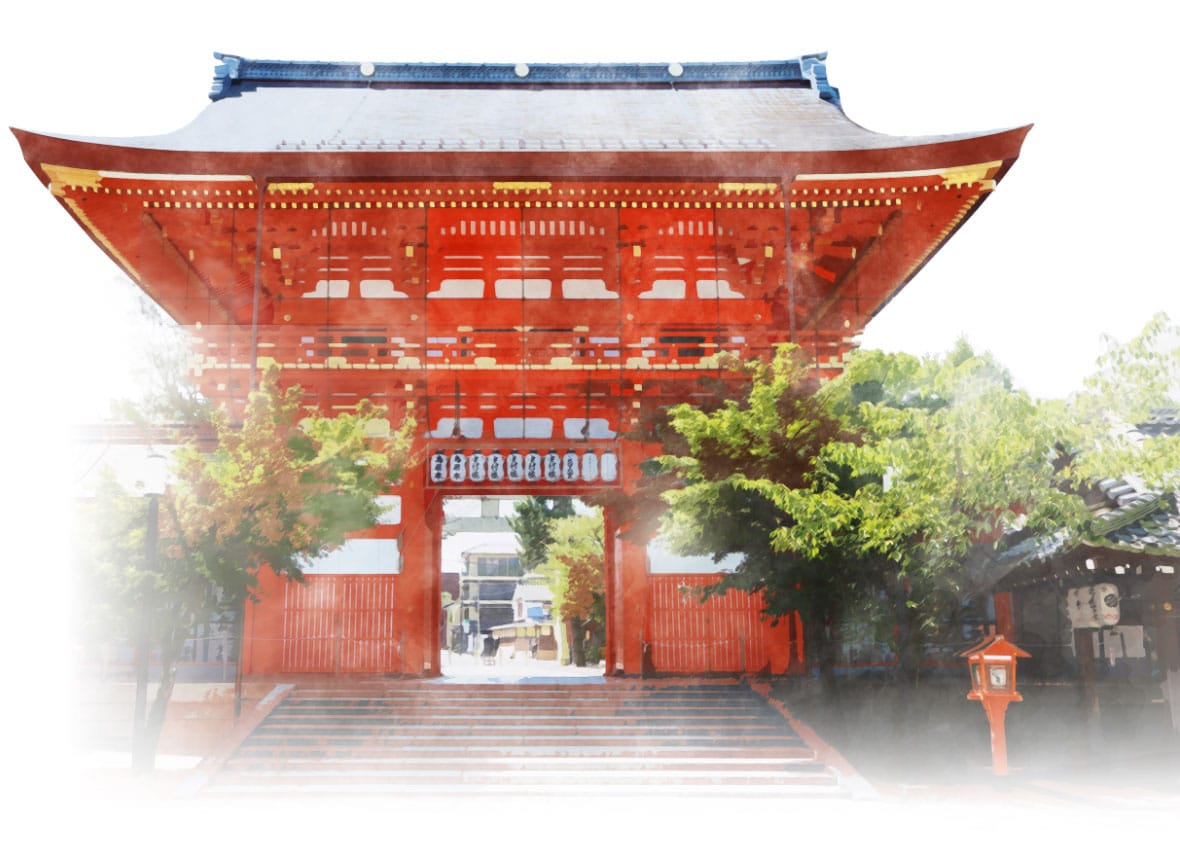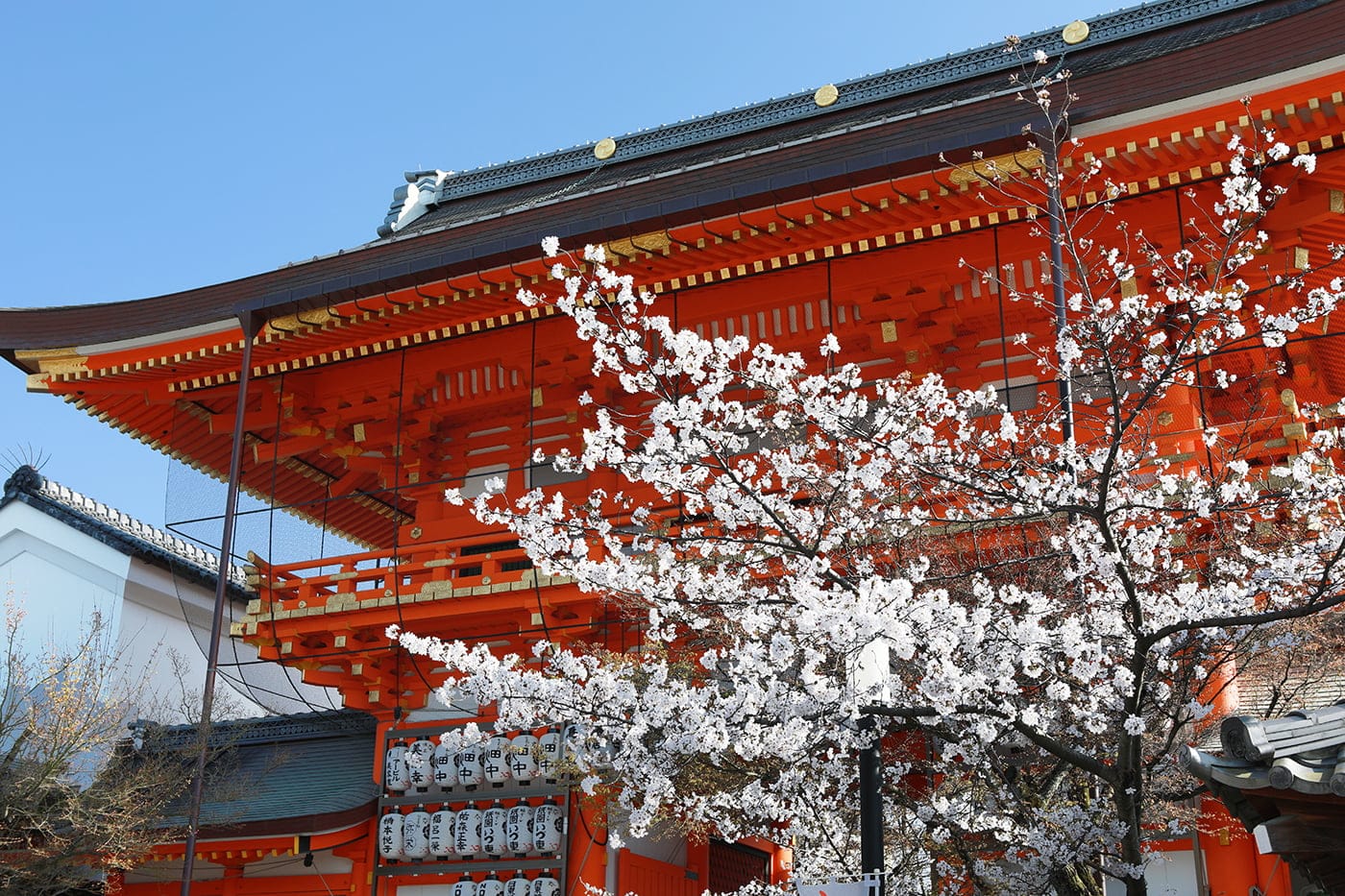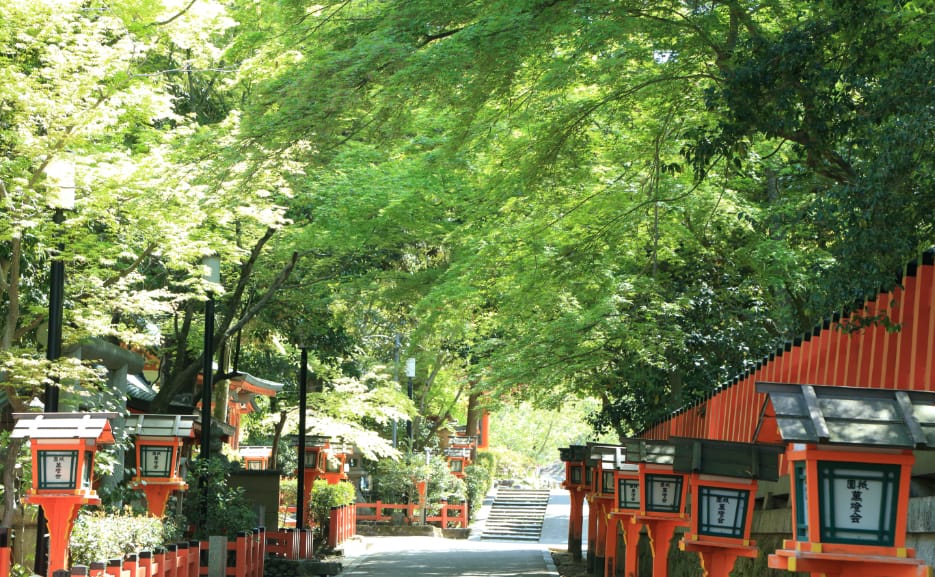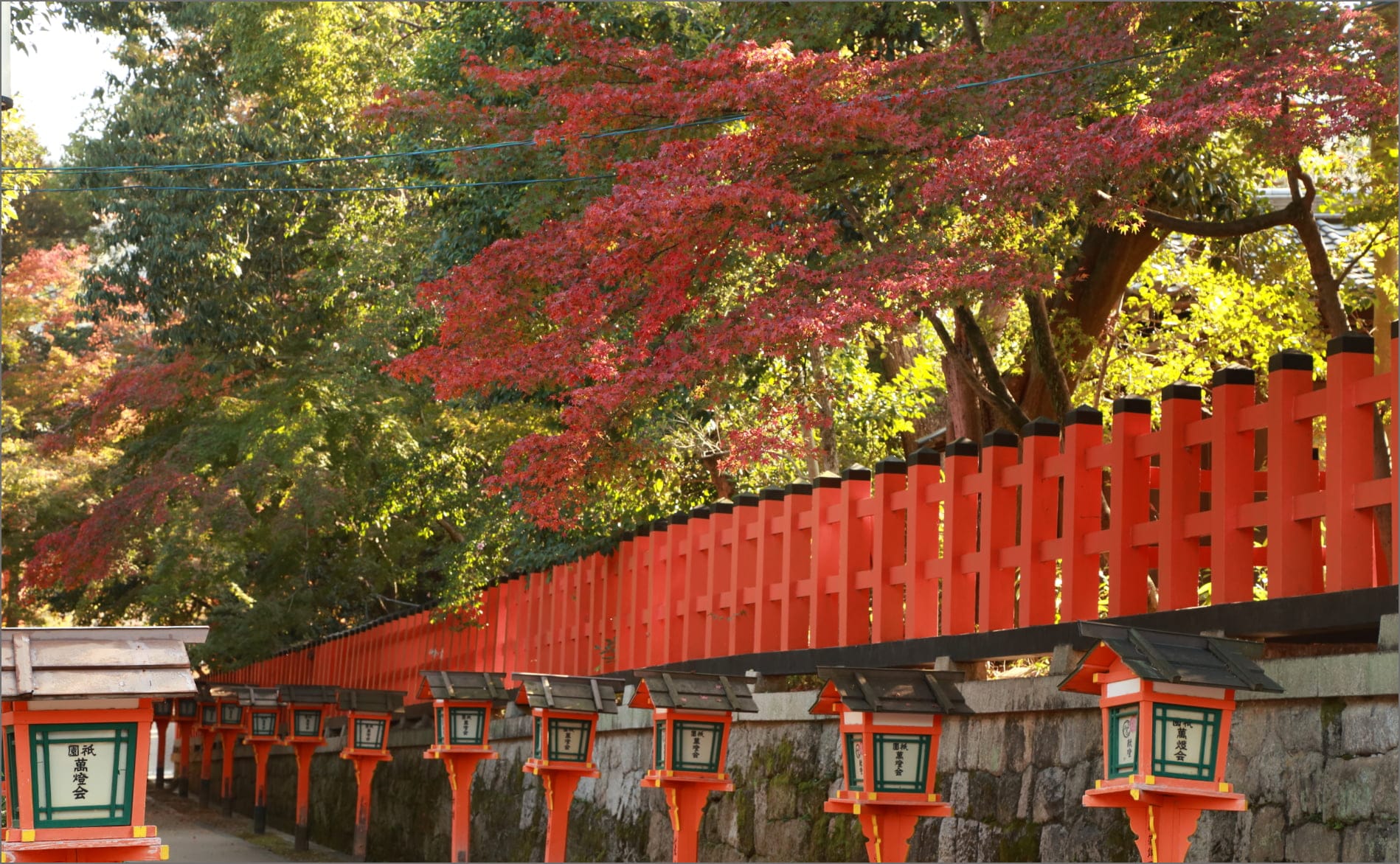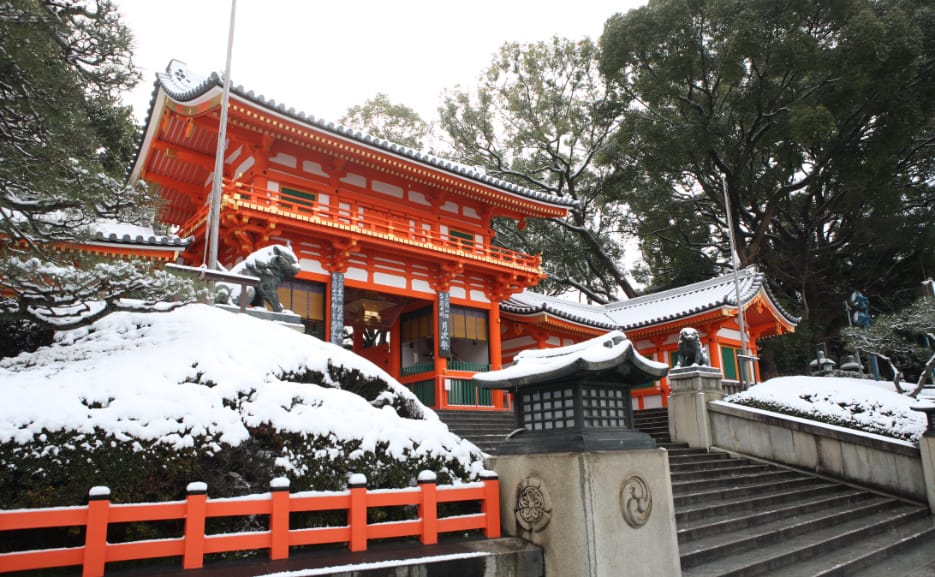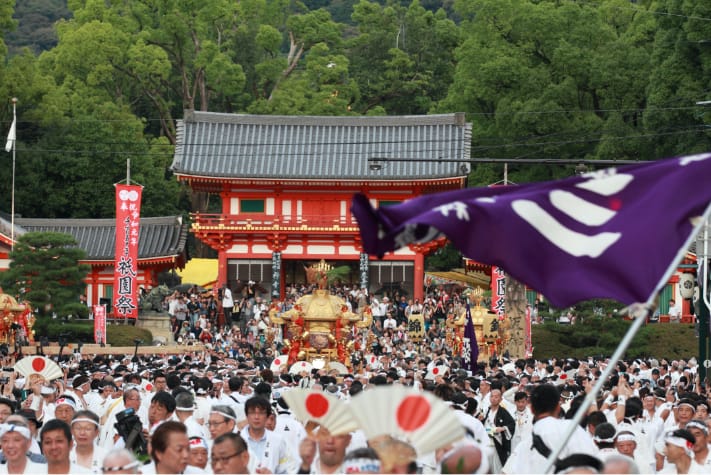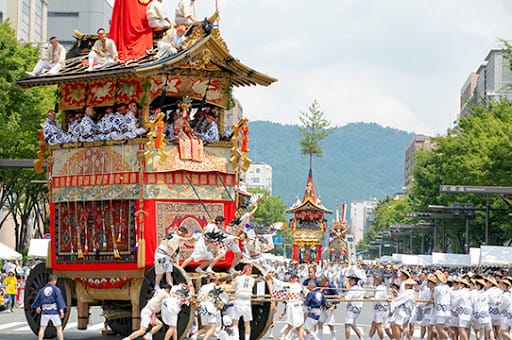Kyoto, visited by many tourists every year, is the city where you can best experience the elegant atmosphere of Japan. Established as "Heian-kyo" in 794, it remained the capital of Japan where the emperor resided for over 1000 years.
The charm of Kyoto lies in its numerous World Heritage sites, including shrines and temples, allowing you to feel Japanese culture and history throughout the city. Among these, Yasaka Jinja Shrine has a long history dating back to 656, even before Kyoto was established as Heian-kyo. Known as the stage for Kyoto's largest festival, the "Gion Festival," Yasaka Jinja Shrine is one of Kyoto's popular tourist spots.
In this article, we'll introduce the history and highlights of Yasaka Jinja Shrine in detail. We'll also explain the etiquette for visiting Yasaka Jinja Shrine, so please check it out!
A Brief History of Yasaka Jinja Shrine
Yasaka Jinja Shrine developed when people prayed to quell an epidemic that was once prevalent. The ritual of offering prayers at that time has continued for over 1000 years as the "Gion Festival." Various deities are enshrined at Yasaka Jinja Shrine, offering benefits for warding off evil, matchmaking, and beauty.
One of its features is that 29 buildings within the shrine grounds, including the main hall which is a national treasure, are designated as important cultural properties. The natural beauty of the shrine grounds and its surroundings, which can be enjoyed in all seasons, is also a reason for its popularity.
Let's take a look at the highlights of Yasaka Jinja Shrine that can be enjoyed in any season!
3 Must-See Highlights at Yasaka Jinja Shrine
The National Treasure "Main Hall" and 29 Important Cultural Properties
Source: Official website
The main highlight of Yasaka Jinja Shrine is the "Main Hall" (honden). Designated as a national treasure in 2020, the Main Hall stands out with its vivid vermilion color and large roof. This style, which covers two buildings with a single large roof, is called "Gion-zukuri" or "Yasaka-zukuri," a unique architectural style not found elsewhere.
It is said that a guardian deity called "Blue Dragon," which harbors the power of the earth, dwells underground beneath the Main Hall. The "transparent fence" (sui bei) surrounding the east side of the Main Hall is one of the important cultural properties. Its see-through design and elegant arabesque pattern are also noteworthy.
Within the shrine grounds, there are 29 other important cultural properties, including the "West Tower Gate" (nishi ro mon), the oldest building in Yasaka Jinja Shrine, the "South Tower Gate" (minami ro mon) which serves as the main gate, and the "Mikoshi Storehouse" which houses three mikoshi (portable shrines) used in the Gion Festival. Be sure to check out these precious buildings that can only be seen at Yasaka Jinja Shrine in Kyoto!
The Fantastical Dance Hall Adorned with Countless Lanterns
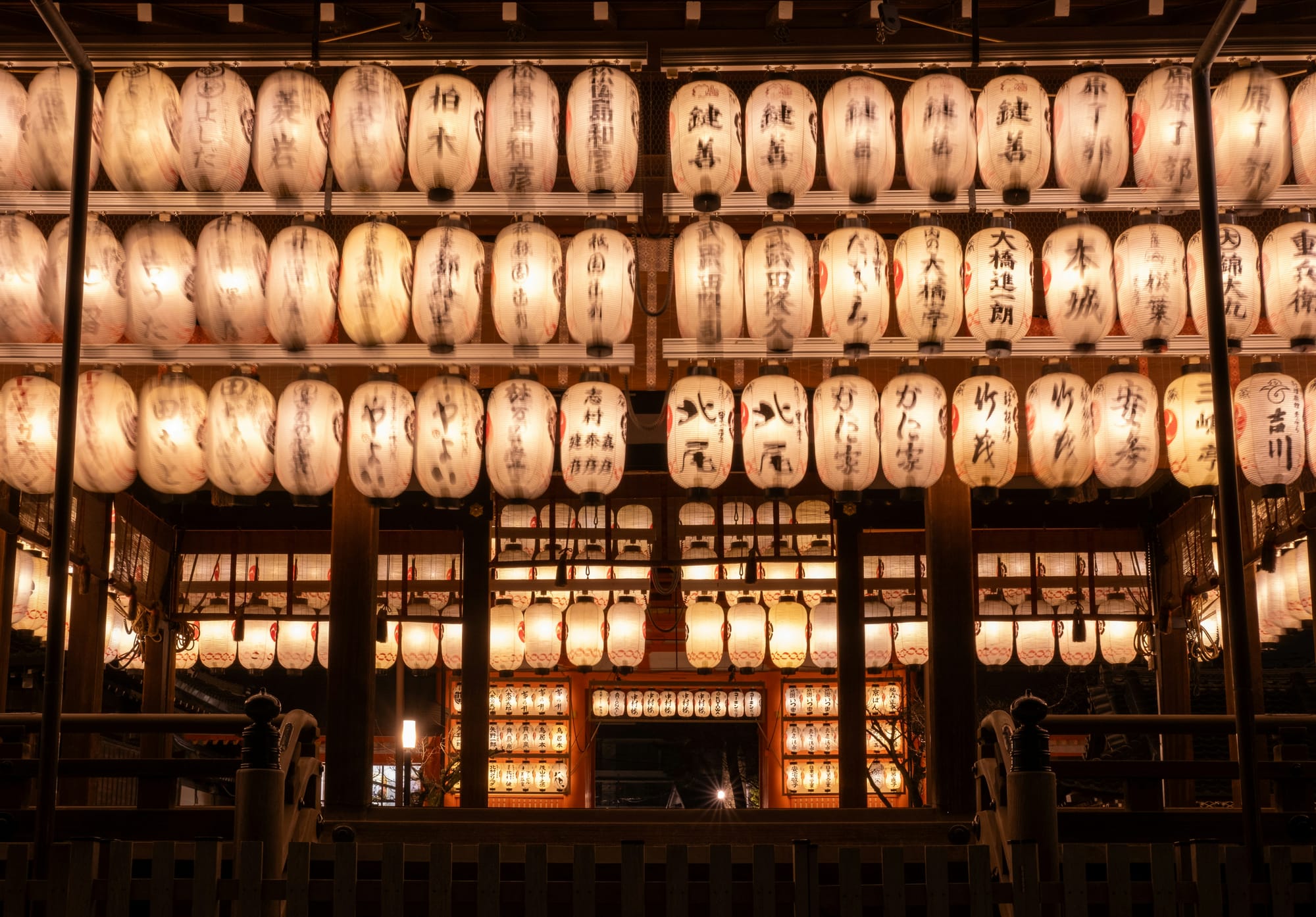
The "Dance Hall" (buden) is a stage-like building for performing "bugaku," a traditional Japanese dance accompanied by ancient music. It is typically built in the center of the shrine grounds to be easily visible from various locations.
The Dance Hall of Yasaka Jinja Shrine, designated as an important cultural property in 2020, is characterized by numerous lanterns donated from nearby restaurants. The lanterns are lit up every night, creating a fantastical atmosphere with their soft, warm glow. You can experience a different charm of Yasaka Jinja Shrine at night compared to daytime.
During the "Setsubun Festival" in February, geishas throw beans from the top of the Dance Hall, scattering "lucky beans" with wishes for "happiness to visit."
On the day I visited, a wedding ceremony was taking place, and the beautiful sight of the bride in a traditional Japanese bridal kimono "shiromuku" was impressive.
The Nature of Yasaka Jinja Shrine Showing Different Expressions in Each Season
Rich in nature, Yasaka Jinja Shrine offers various sceneries to enjoy as the seasons change. Here, we introduce the highlights of each season showing different expressions.
Which season's scenery would you like to see? Whichever season you visit, you can fully experience the unique Japanese atmosphere and charm of Kyoto.
Spring at Yasaka Jinja Shrine with Beautiful Cherry Blossoms
Source: Official website
In spring, you can enjoy the beautifully blooming cherry blossoms at Yasaka Jinja Shrine. Take a leisurely stroll around the shrine grounds while feeling the pleasant spring breeze. The vermilion color of the South Tower Gate and the light of the lanterns further enhance the beauty of the pale pink cherry blossoms.
Maruyama Park, Kyoto's oldest park adjacent to the east of the shrine, is a popular cherry blossom viewing spot among locals. The dynamically blooming "Gion Weeping Cherry Tree" is at its best in early April, and you can enjoy a romantic scenery lit up at night.
Summer at Yasaka Jinja Shrine: Festivals and Fresh Greenery
Source: Official website
When it comes to summer at Yasaka Jinja Shrine, the main attraction is the Gion Festival. Many people feel the arrival of summer with the sound of flutes and drums called "Gion Bayashi."
Looking at the nature within the shrine grounds, you'll see trees and leaves growing vigorously. The contrast between the vivid fresh greenery and the vermilion color of the West Tower Gate stands out against the summer blue sky. It's especially recommended for those who want to take Instagram-worthy photos.
My favorite way to spend time at Yasaka Jinja Shrine in summer is to take a break at a nearby teahouse after praying. Eating shaved ice while feeling Kyoto's hot summer is the best!
Autumn at Yasaka Jinja Shrine Colored by Autumn Leaves
Source: Official website
In autumn at Yasaka Jinja Shrine, it's recommended to take a leisurely stroll around the shrine grounds beautifully colored in red and yellow. While Kiyomizu-dera Temple and Tofuku-ji Temple are popular for autumn leaves in Kyoto, enjoying the autumn foliage quietly at Yasaka Jinja Shrine can also be a wonderful experience.
The scenery called "Maple Tunnel" spreads along the path behind the Main Hall. On sunny days, the contrast with the blue sky is beautiful, and at night when the stone lanterns and paper lanterns are lit up, a fantastical atmosphere drifts.
The large ginkgo tree near the South Tower Gate is at its best in late November when its leaves shine in brilliant gold.
Winter at Yasaka Jinja Shrine Dyed in Snow
Source: Official website
Yasaka Jinja Shrine in winter, wrapped in a solemn atmosphere, has a different flavor from other seasons colored by trees and plants. Especially on snowy days, Yasaka Jinja Shrine exudes a winter charm that feels like it cleanses your heart. The contrast between the red color of the gates and Main Hall and the pure white snow is beautiful, allowing you to fully enjoy the charm of Japanese winter.
I have visited several times for the "Wokera Mairi" held from New Year's Eve to New Year's Day. This event, where fire is kept burning all night long praying for health throughout the year, is a winter tradition in Kyoto. If you visit in a beautiful kimono, you might be able to welcome a wonderful new year!
The Gion Festival Season is Recommended When Visiting Yasaka Jinja Shrine
What is the Gion Festival?
Source: Official website
The "Gion Festival," held for one month from July 1st to 31st, is also famous as one of Japan's three major festivals. This festival, held in the Gion area centered around Yasaka Jinja Shrine, is said to have started about 1155 years ago to pray for the dispelling of epidemics.
As the economy developed and the town became wealthy, the scale of the festival gradually increased. Performances of Noh, a traditional Japanese art combining dance and drama, and parades of mikoshi (portable shrines) began to be held, and the custom of enjoying the festival itself as a town event developed.
The "Yamaboko Junko," where floats called "yamaboko" decorated with mountain-shaped ornaments compete in extravagance, has been registered as a UNESCO Intangible Cultural Heritage, establishing its position as a Japanese festival to be proud of worldwide.
Highlights of the Gion Festival
Source: Official website
Although the Gion Festival is held for a month, for tourists with limited stay, it's recommended to visit during the main event "Yamaboko Junko" and its eve event "Yoiyama."
During the "Yamaboko Junko" held on July 17th and 24th, a total of 34 giant yamaboko parade through the town of Gion. The impressive yamaboko, reaching up to 25 meters in height and 12 tons in weight, are elaborately decorated by each town, and are called "moving museums" for their extravagance.
During the Yoiyama event held on July 15th and 16th, many food stalls line up on streets closed to vehicle traffic, allowing you to enjoy festival food!
Indispensable to Japanese festivals is the unique music called "Ohayashi" played with drums and flutes. As someone who grew up in the Tokyo area, when I hear the Gion ohayashi, different from my local festival music, it heightens my feeling of "I've come to Kyoto in summer!"
Points to Note When Visiting Yasaka Jinja Shrine
It's Very Popular and Always Crowded
Yasaka Jinja Shrine, popular as a tourist spot, is very crowded throughout the year. When there's a line to pray, please line up at the end of the queue and wait your turn. When visiting in a group, everyone who wants to pray should line up, not just a representative.
As it's open for worship 24 hours a day, it's also recommended to visit during relatively less crowded times like early morning or night. When praying early in the morning or at night, be mindful of noise and pray quietly with a calm mind.
Observe Shrine Manners and Etiquette
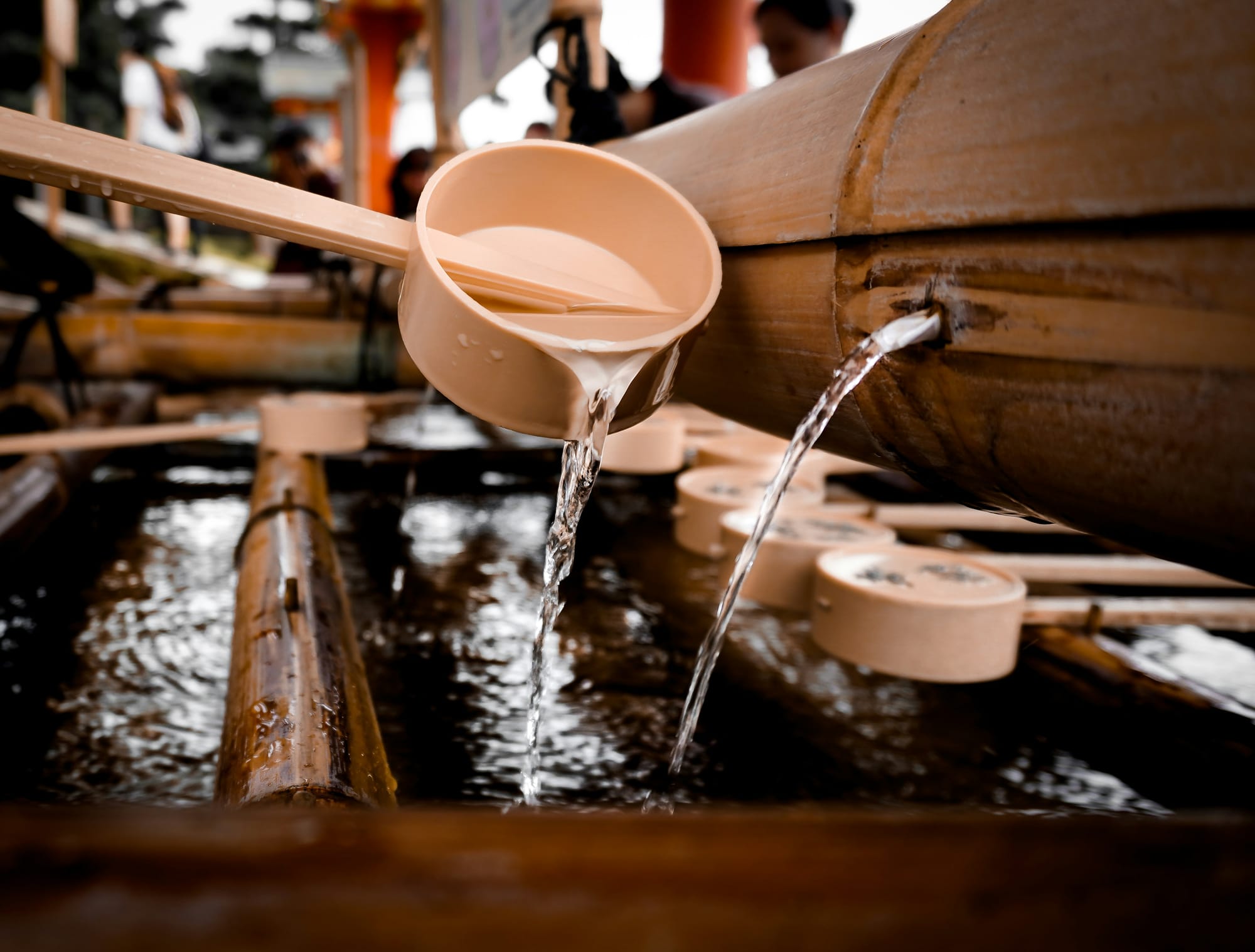
There are several manners and etiquettes to observe when visiting Japanese shrines. Manners at shrines and temples differ by country and religion, so foreigners might be confused, but there's no need to think too hard about it. Basically, if you have a mind to show respect to the deities, you'll be fine.
Here are some general manners for shrines including Yasaka Jinja Shrine. Please use them as a reference:
- Bow once before passing through the torii (shrine entrance)
- First pray to the deities when entering the shrine grounds
- Enjoy taking photos and strolling after praying
- Do not take photos in prohibited areas
- Smoking is prohibited
- Take your trash with you
- Do not take plants, stones, etc. from the shrine grounds
- When leaving, turn back and bow once before departing
Once you've got the basic manners in mind, enjoy Yasaka Jinja Shrine as you like!
Access
Address: 625 Kitagawa, Gion-cho, Higashiyama-ku, Kyoto
Access: 5-minute walk from Gion-shijo Station on the Keihan Line / 8-minute walk from Kyoto-Kawaramachi Station on the Hankyu Kyoto Line
Phone: 075-561-6155
Worship hours: 24 hours
Admission fee: Free
Official website

